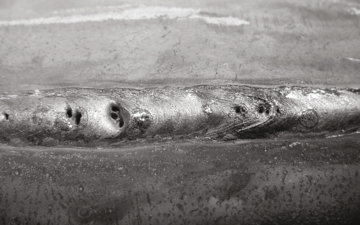Porosity in Welding: Identifying Common Issues and Implementing Ideal Practices for Avoidance
Porosity in welding is a prevalent issue that commonly goes undetected until it causes substantial issues with the integrity of welds. This usual flaw can jeopardize the strength and longevity of bonded structures, positioning safety threats and causing costly rework. By recognizing the source of porosity and carrying out efficient avoidance techniques, welders can significantly improve the top quality and dependability of their welds. In this conversation, we will explore the crucial factors adding to porosity formation, analyze its detrimental impacts on weld efficiency, and discuss the very best practices that can be embraced to minimize porosity incident in welding procedures.
Typical Reasons For Porosity

One more constant perpetrator behind porosity is the existence of pollutants on the surface area of the base metal, such as oil, grease, or rust. When these contaminants are not effectively removed before welding, they can evaporate and come to be trapped in the weld, triggering problems. Additionally, utilizing dirty or damp filler materials can introduce impurities right into the weld, adding to porosity problems. To alleviate these common sources of porosity, comprehensive cleaning of base steels, appropriate protecting gas choice, and adherence to ideal welding specifications are crucial methods in achieving high-quality, porosity-free welds.
Impact of Porosity on Weld High Quality

The existence of porosity in welding can dramatically compromise the structural stability and mechanical residential or commercial properties of bonded joints. Porosity develops voids within the weld metal, compromising its general toughness and load-bearing ability.
One of the primary repercussions of porosity is a reduction in the weld's ductility and durability. Welds with high porosity degrees often tend to display lower impact stamina and decreased capability to warp plastically prior to fracturing. This can be specifically worrying in applications where the bonded parts undergo vibrant or cyclic loading problems. Porosity can hinder the weld's capacity to effectively transfer forces, leading to premature weld failing and possible security threats in important frameworks. What is Porosity.
Best Practices for Porosity Avoidance
To boost the structural integrity and quality of welded joints, what specific measures can be applied to reduce the occurrence of porosity throughout the welding process? Porosity prevention in welding is critical to make sure the integrity and toughness of the final weld. One reliable method appertains cleansing of the base metal, removing any kind of pollutants such as corrosion, oil, paint, or dampness that might lead to gas entrapment. Making certain that the welding devices remains in great problem, with clean consumables and ideal gas flow prices, can additionally substantially decrease porosity. In addition, maintaining a secure arc and controlling the welding specifications, such as voltage, current, and take a trip speed, helps develop a consistent weld swimming pool that minimizes the find this threat of gas entrapment. Utilizing the proper welding technique for the certain product being welded, such as changing the welding angle and weapon position, can even more protect against porosity. Regular evaluation of welds and prompt removal of any problems determined throughout the welding process are vital techniques to avoid porosity and produce premium welds.
Importance of Proper Welding Strategies
Implementing proper welding strategies is vital in making sure the structural stability and quality of bonded joints, building upon the foundation of effective porosity avoidance steps. Extreme heat can lead to raised porosity due to the entrapment of gases in the weld pool. Additionally, making use of the suitable welding criteria, such as voltage, present, and take a trip speed, is vital for accomplishing audio welds with very little porosity.
Furthermore, the selection of welding procedure, whether it be MIG, TIG, read or stick welding, should straighten with the details needs of the project to guarantee optimum results. Appropriate cleaning and prep work of the base steel, along with choosing the ideal filler product, are likewise necessary elements of proficient welding techniques. By adhering to these ideal techniques, welders can reduce the threat of porosity development and produce top notch, structurally sound welds.

Examining and High Quality Control Measures
Checking treatments are crucial to find and protect against porosity in welding, ensuring the strength and resilience of the last product. Non-destructive testing approaches such as ultrasonic testing, radiographic testing, and visual examination are frequently used to identify potential issues like porosity.
Conducting pre-weld and post-weld evaluations is also vital in preserving quality control criteria. Pre-weld evaluations entail confirming the materials, tools settings, and tidiness of the work area to avoid contamination. Post-weld examinations, on the other hand, assess the final weld for any kind of flaws, including porosity, and confirm that it meets specified standards. Implementing a thorough quality control strategy that consists of extensive screening treatments and assessments is paramount to reducing porosity issues and making certain the general quality Check Out Your URL of welded joints.
Final Thought
To conclude, porosity in welding can be an usual concern that affects the top quality of welds. By identifying the usual root causes of porosity and applying best techniques for avoidance, such as proper welding methods and testing procedures, welders can make certain excellent quality and trustworthy welds. It is necessary to focus on avoidance methods to lessen the event of porosity and preserve the stability of bonded frameworks.